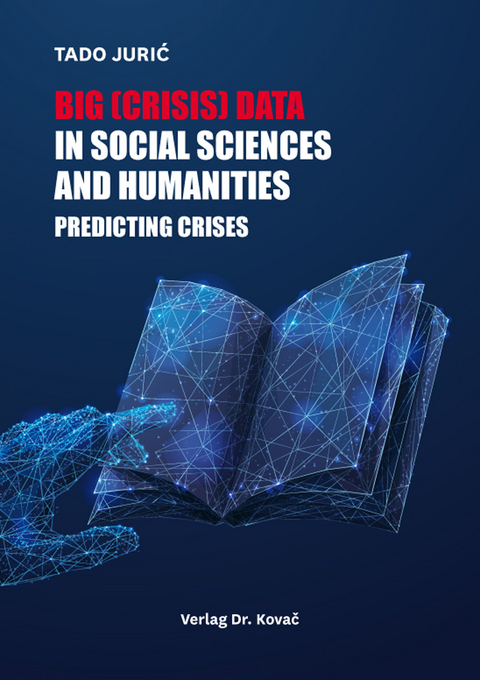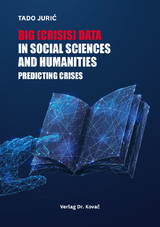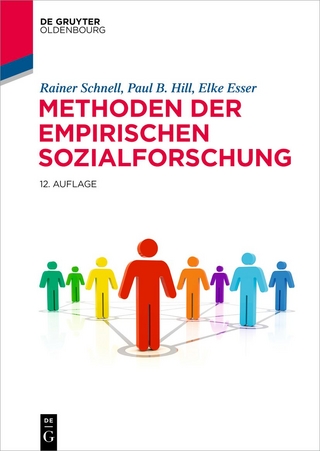Big (Crisis) Data in Social Sciences and Humanities: Predicting Crises
Seiten
2023
|
1. Aufl.
Kovac, Dr. Verlag
978-3-339-13698-5 (ISBN)
Kovac, Dr. Verlag
978-3-339-13698-5 (ISBN)
The method of Big (Crisis) data holds promise to answer, among others, the questions to the main European challenge: (irregular) migration. By combining various big data sources, this approach offers insights into migration trends a year before official data sources.
It helps model future trends and answer the questions:
How many asylum seekers and labour migrants will there be in individual EU members in the following year?
What will be the routes and destination countries of irregular migrants?
How many refugees will arrive from war-affected areas in the EU?
How to measure the integration willingness of labour migrants and asylum seekers from Asia and Africa in the EU?
…
In times of crisis, Big (Crisis) data approach provides timely and vital information for governments and crisis managers. E.g. this method accurately estimated at the outbreak of the war that Germany may expect up to 1.5 million Ukrainian refugees by mid 2023, which turned out to be correct.
In the field of digital humanities, the book demonstrates how big data analytics can uncover hidden patterns in history, serving as a window into the past. E.g. this approach yielded robust evidence supporting the hypothesis that COVID-19 was not an isolated occurrence, as the Russian flu of the late 19th century exhibited remarkably similar characteristics.
The advent of the big data era has undeniably introduced a new paradigm, challenging conventional approaches to data collection, analysis, and interpretation in social sciences and humanities. This book is a practical guide for navigating and effectively applying this transformative potential.
It helps model future trends and answer the questions:
How many asylum seekers and labour migrants will there be in individual EU members in the following year?
What will be the routes and destination countries of irregular migrants?
How many refugees will arrive from war-affected areas in the EU?
How to measure the integration willingness of labour migrants and asylum seekers from Asia and Africa in the EU?
…
In times of crisis, Big (Crisis) data approach provides timely and vital information for governments and crisis managers. E.g. this method accurately estimated at the outbreak of the war that Germany may expect up to 1.5 million Ukrainian refugees by mid 2023, which turned out to be correct.
In the field of digital humanities, the book demonstrates how big data analytics can uncover hidden patterns in history, serving as a window into the past. E.g. this approach yielded robust evidence supporting the hypothesis that COVID-19 was not an isolated occurrence, as the Russian flu of the late 19th century exhibited remarkably similar characteristics.
The advent of the big data era has undeniably introduced a new paradigm, challenging conventional approaches to data collection, analysis, and interpretation in social sciences and humanities. This book is a practical guide for navigating and effectively applying this transformative potential.
| Erscheinungsdatum | 31.12.2023 |
|---|---|
| Reihe/Serie | Studien zur Demographie und Bevölkerungsentwicklung ; 5 |
| Verlagsort | Hamburg |
| Sprache | englisch |
| Maße | 148 x 210 mm |
| Gewicht | 338 g |
| Themenwelt | Sozialwissenschaften ► Soziologie ► Empirische Sozialforschung |
| Sozialwissenschaften ► Soziologie ► Spezielle Soziologien | |
| Schlagworte | Big Data • Braindrain • Demographie • Digitale Geisteswissenschaft • digital humanities • Google Analytics • Illegale Migration • Migration |
| ISBN-10 | 3-339-13698-X / 333913698X |
| ISBN-13 | 978-3-339-13698-5 / 9783339136985 |
| Zustand | Neuware |
| Haben Sie eine Frage zum Produkt? |
Mehr entdecken
aus dem Bereich
aus dem Bereich
Buch | Hardcover (2023)
De Gruyter Oldenbourg (Verlag)
34,95 €
ein Arbeitsbuch
Buch | Softcover (2021)
De Gruyter Oldenbourg (Verlag)
34,95 €




